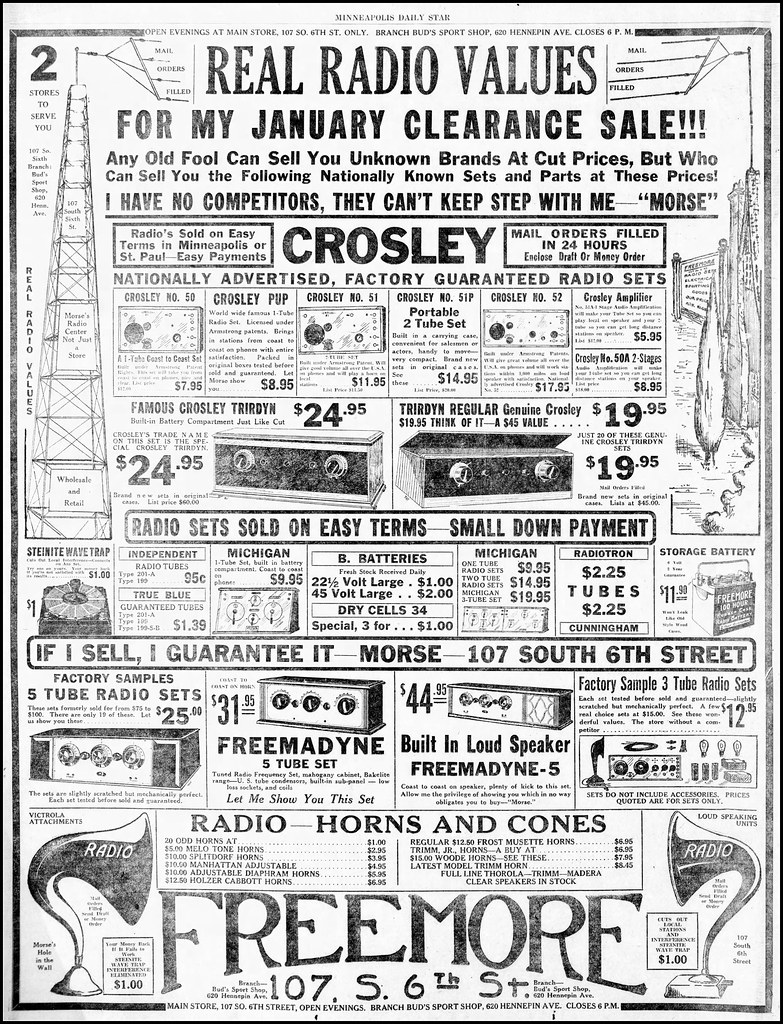
The Digital Advertising Alliance (DAA) is a self-regulatory organization for online behavioral advertising. Its members include several leading national advertising trade groups. The DAA was formed in 2010. It provides a policy framework to define data uses and give consumers the opportunity to opt-out personalized advertising. The organization also offers a portal that allows users to manage their advertising preferences.
The DAA is made up of a consortium of leading national advertising trade groups, including the American Advertising Federation, the Interactive Advertising Bureau, and the Network Advertising Initiative. They work to protect personal information and promote consumer choice.
The DAA recently published guidelines for advertisers on how to comply with the California Consumer Privacy Act (CCPA). Companies that collect personal information from consumers for targeted advertising purposes must honor the state's "Do Not Sell" request. Indirectly collecting such information from companies must adhere to the law. This includes certifying and identifying the DAA as to their compliance with the policy framework.

The new DAA program will give mobile consumers additional options to manage their advertising preferences. These new tools for ad preference will utilize the AdChoices symbol of the company and will complement existing opt out mechanisms. These tools let users choose whether they would like to see ads depending on their location, interests-based data, and a combination of both.
Mobile advertising has a unique set of challenges for brands. While traditional conversion funnels are still in place, the rise of mobile devices has increased the need for an integrated approach. A recent report from the Interactive Advertising Bureau shows that publishers can generate between 20 and 30 percent more revenue using location data. But, this doesn't mean companies can use location information without permission. There are several privacy guidelines and laws that help protect consumers from unauthorised collection of location data.
DAA has created a new certification process that protects user privacy for addressable media identifiers providers (AMIs). AMIs provide important functionality for digital content that is ad-supported. These identifiers can be used for identification of browsers, apps, and devices. These identifiers enable advertising networks and platforms to target advertisements according to the user's preferences. AMIs are an alternative to tokens or cookies. They can be used for tracking and identification. They offer privacy protections to millions of consumers, among other things.
Digital ad networks are a group of advertising companies that connect advertisers to the owners of digital property, such as publishers. Advertisers only pay an ad network if their campaigns meet pre-determined targets. Advertisers can be assigned to certain markets depending on the size and scope of the ad network. Guardian has teamed with Economist and the Financial Times has formed an alliance with Reuters.

News organizations currently occupy only 12 percent in the digital ad marketplace. Pangaea, an advertising alliance which includes the Guardian as well as the Financial Times, is looking to get into this sector.
FAQ
What do you need to know about print advertising?
Print advertising is an effective medium for communicating with consumers. Print advertising is used extensively by companies to promote their products or services. The key objective is to capture the attention of the consumer.
Print ads are usually short (one page) and contain text, pictures, logos, and other graphics. They may also include sound, animation, video, and hyperlinks.
Here are the main types and classifications of print advertising:
1. Brochures - These are large format printed pieces designed to attract people into stores. Brochures are filled with eye-catching designs, colorful pictures, and attractive graphics.
2. Catalogues- These are smaller versions and variants of brochures. These are often sent to customers who have asked for information on particular items.
3. Flyers - These small pieces of paper are distributed at events like fairs and concerts. They are generally free but must be paid for if they are handed out at retail outlets.
4. Posters - These are larger versions of flyers. They can be displayed on fences, walls, or buildings. They are usually made using computer software programs, which is designed to draw the eye of passersby.
5. Direct mail - These are letters or postcards that are sent directly to potential customers. Companies send these out periodically to remind existing customers about their business.
6. Newspaper Ads - These are placed in newspapers and magazines. These are typically quite long and often contain text as well images.
What is advertising's main purpose?
Advertising isn’t about selling products.
Advertising is all about communicating ideas and values with people who are already interested. It is about changing attitudes and minds. It's all about building relationships.
It's all a matter of making people feel good.
But, if you don’t have a clear understanding of your customers’ needs, you will not be able sell anything.
You must first get to know your customer before you can start advertising projects.
Then you can design ads that will resonate with them.
What is branding?
Branding is how you communicate who you are and what you stand for. It's how people remember you and your name.
Branding involves creating an identity that makes your company stand out. A brand does not only include a logo, but includes everything that you look like and how your voice is used by employees.
A strong brand helps customers feel confident in buying from you because they know exactly what they're getting. This gives customers the confidence to choose your products over other brands.
Apple is a good example of a company that has a strong brand. Apple is a globally recognized brand because of its beautiful design, high-quality product lines, and friendly customer service.
Apple's name has become synonymous for technology. People think of Apple whenever they see a computer or smartphone.
You should think about creating a brand if you are considering starting a business. This will give you and your business a face.
Advertising what is it?
Advertising is an art form. Advertising is more than selling products. It's all about creating emotional connections between people with brands.
Advertising is all about telling stories with images and communicating ideas.
You have to make sure you are communicating clearly and persuasively. You must tell a story that is relatable to your target market.
This makes advertising different from other forms of communication, such as public speaking, writing, or presentations.
A successful ad campaign is a way to establish a brand identity.
This is how you are memorable. You become someone who people want to remember.
How much does advertising on social media cost?
You should be aware that social media advertising costs money. You will be charged monthly for your time spent on each platform.
Facebook - $0.10 per 1000 impressions
Twitter - $0.20 per 1,000 impressions (if you tweet)
If you send out invitations to Linkedin, $0.30 per 1,000 impressions
Instagram - $0.50 Per 1,000 Impressions
Snapchat - $0.60 per 1,000 impressions ($0.40 per user)
YouTube – $0.25 per 1000 views
Tumblr Text Posts - $0.15 Per 1,000 Impressions
Pinterest - $0.05 per 1,000 impressions per month
Google + - $0.15 - $0.20 per 1 Million Impressions
Tumblr – $0.15 - $0.20 per 100,000 impressions
Vimeo – $0.20- $0.25 Per 10,000 Impressions
Soundcloud - $0.20 to $0.0.25 per 1 Million Plays
StumbleUpon - $0.20 -$0.25 per 1 billion pageviews
Digg - $0.20- $0.25 for 1000 diggs
Reddit $0.20-$0.25/1000 comments
Wordpress $0.20-$0.25 per 500 Comments
Flickr - $0.20 -- $0.25 per 5,000 photo uploads
What is an advert buyer?
An advertiser purchases advertising space on TV, radio or print media.
Advertisers pay only for the time their message is to appear.
They are not necessarily looking for the best ad but rather what is most effective at reaching their target market.
Advertisers may have demographic information such as the age, gender, marital status, income level, occupation, hobbies, and interests of their customers.
The advertiser can use this data to determine which medium will work best for them. They might decide direct mail is more effective for older people.
Advertisers also consider the competition. If there are similar businesses nearby, they might choose to place their ads near those competitors.
Advertisers must also take into account the size of their budget as well as the time it will take to spend the money before it expires.
What are the basics of internet advertising?
Internet advertising has become an integral part any business strategy. It allows companies to reach potential customers at low costs. However, there are many different types of internet advertising available. Some are free and some require payment.
There are several options for advertising on the internet. These include banner ads, pop-up advertisements, search engine optimization (SEO), PPC (pay-per-click) advertisements, social media and mobile marketing. Each method has its benefits and drawbacks.
Statistics
- In 1919 it was 2.5 percent of gross domestic product (GDP) in the US, and it averaged 2.2 percent of GDP between then and at least 2007, though it may have declined dramatically since the Great Recession. (en.wikipedia.org)
- Advertising's projected distribution for 2017 was 40.4% on TV, 33.3% on digital, 9% on newspapers, 6.9% on magazines, 5.8% outdoor, and 4.3% on radio. (en.wikipedia.org)
- This means that at least 50% of an ad needs to be shown on the screen for at least one second. (quicksprout.com)
- Worldwide spending on advertising in 2015 amounted to an estimated US$529.43 billion. (en.wikipedia.org)
External Links
How To
How do I place my advertisement on a billboard
Billboards were popularized by the United States Army during World War II. They became a standard fixture along roadsides and highways. Most billboards contain text advertising. However, some have photographs or art. Although most billboards remain static, some display messages that change frequently, such as weather forecasts and stock prices or news about political events.
Billboards most often are found outside, but there are indoor versions. Outdoor billboards are usually seen by motorists passing by them several times per day. Indoor billboards may only be viewed once every few year. The most common type of outdoor billboard is called a "cubic" billboard because it is composed of three layers -- two sheets of glass sandwiching a layer of fiberglass mesh. This design allows air movement through the billboard. It is cool in hot weather, and warm when it's cold.
Companies like Billboard Advertising Inc. are paid by advertisers to place their ads on billboards. Advertisers are then offered space on these billboards by these companies. These spaces are sold to advertisers depending on the amount they plan to spend on advertising. These advertisers often choose the best location for their ads depending on how many people they are likely to see.
Billboard Advertising Inc. sells advertising space. It also has agreements with local governments to place signs on public property. Some cities allow billboards anywhere; others restrict them to certain areas. Chicago for instance requires billboards not to exceed 1,000 feet from any highway. Others cities have a requirement that billboards are no closer to a school or church than 500 feet.
Billboard Advertising Inc. has contracts for products and services promotion throughout the United States.